Officially named the Republic of China (R.O.C.), Taiwan is a country located off the southeastern coast of mainland China, separated from it by the Taiwan Strait. At its narrowest point, this body of water is 130 kilometers wide, yet some smaller Taiwanese territorial islands lie only 1.2 miles from the mainland. It is an island on the western edge of the Pacific Ocean, with Japan roughly 1,050 kilometers to the north and the Philippines lying approximately 380 kilometers to the south.
It possesses a total area of 36,000 sq. km and its jurisdiction encompasses the islands of Taiwan, Penghu, Kinmen, Matsu, Dongsha, Zhongsha and Nansha. The total population is approximately 23 million people and the primary languages are Mandarin and Taiwanese, as well as the less spoken Hakka and some indigenous languages. The primary religion is Buddhism, but Taosim, Islam and Christianity are also present.
The de facto capital of the country is Taipei, but de jure the capital is Nanjing. Nanjing is the capital city of the Jiangsu Province of China, and it is still officially the capital of the Republic of China (Taiwan). The Chinese Nationalist Party (Kuomintang) lead by Chiang Kai-Shek retreated to Taiwan in 1949, and rebranded itself as the R.O.C. The R.O.C. still declares itself the sole legitimate government of China.
Taipei is the national capital of Taiwan and the largest city, if New Taipei is included. Over 2.6 million people live in Taipei. The southern city of Kaohsiung, a major maritime transportation hub in East Asia, is a close second in size and importance, and boasts a slightly larger population at 2.77 million people. Taiwan’s GDP in 2018 was $589.4 billion, an increase from $574.9 billion in 2017, but in its absolutely value it dropped $14.5 billion, due to inflation and other factors. It ranks as the 21st largest economy in the world by GDP.
In terms of military forces, Taiwan is ranked 22 out of 137 countries by the website Global Firepower. To provide some context of its military capabilities, it is ranked just behind Canada and ahead of Vietnam, although these rankings can be misleading for a number of factors. Total military personnel are estimated at 1,890,000, with 215,000 active-duty and 1,675,000 reserves. The over-all manpower available, once emergency conscription is taken into account, stands at approximately 12,196,809.
On April 15th of this year, Taiwan announced its plan to boost defense spending over a 10-year period. For 2019, the defense budget stands at $11.34 billion, with it going up by 5.6% from 2018. The plan is for the annual budget to progress to $13 billion by 2027.
The ROC Navy is very much a defensive maritime force, which is quite evident in its composition. It is tasked with defending the nation’s maritime territories, maintaining maritime lines of communication, and interdicting or preventing an amphibious invasion by Chinese forces. This is a daunting task considering both the antiquated equipment available, and the ever growing material and numerical superiority of the PLA Navy.
Taiwan’s navy numbers approximately 40,000 personnel. Its naval command headquarters commands five surface warfare fleets, one amphibious fleet and one submarine squadron. Half of these assets are based in the port city of Kaohsiung, in the southwestern part of the island. The ROC Marine Corps consists of approximately 10,000 men serving in three brigades and associated support units.
Taiwanese Navy Capabilities
DIESEL ELECTRIC SUBMARINES (SSK)
Hai Lung (Sea Dragon) Class Submarine
Manufactured in the Netherlands for Taiwan, the Hai Lung is a modified version of the Dutch Navy’s Zwaardvis class, which in turn is based on the US Barbel class. The design was altered to include the placement of noise-reducing machinery on a false deck with spring suspension for silent running. Taiwan operates two such submarines and they were constructed between 1982 and 1986. Both SSKs were commissioned in 1987 and are still in active duty. The two vessels in class are the Hai Lung (Sea Dragon) SS-79) and Hai Hu (Sea Tiger) SS-794.
Tactical and Technical Specifications:
- Propulsion: 3 × Bronswerk/Stork-Werkspoor RUB 215×12 diesels; 4050 hp
- Speed when submerged: 20 knots
- Speed when surfaced: 12 knots
- Sensors and processing systems: type 1001 radar, Sonar Elodone Octopus, type 20026 towed array, DUUX-5
- Complement: 67 crew members out of which 8 officers
- Range: 18,966 kilometers
Size:
- Length: 66.9 meters
- Beam: 8.4 meters
- Draught: 6.7 meters
- Displacement when surfaced: 2,376 tons
- Displacement when submerged: 2,660 tons
Armaments:
- 6 x 21″ (533 mm) Torpedo tubes in bow (28 reloads) with UGM-84 Harpoon anti-ship missile support.
Hai Shih Class Submarine
Taiwan currently operates two Hai Shih class submarines, which are both former US Tench-class submarines. The Hai Shih SS-791 was formerly the USS Cutlass, while the Hai Po SS-792 was formerly the USS Tusk. The submarines were commissioned in 1945 and are officially the world’s oldest active military submarines. They were transferred to Taiwan from the U.S. in 1973. The submarines received a retrofit in 2017 and are still reportedly capable of combat missions, yet their combat value is likely minimal, and are most likely being used for training.
Tactical and technical specifications:
- Propulsion: 4 × Fairbanks-Morse Model 38D8-⅛ 10-cylinder opposed piston diesel engines driving electrical generators, 2 × 126-cell Sargo batteries, 2 × low-speed direct-drive Elliott electric motors, two propellers
- Speed when submerged: 15 knots
- Speed when surfaced: 18 knots
- Complement: 71 crew members out of which 10 officers
- Range: 20,000 kilometers when surfaced at 10 knots
Size:
- Length: 95.0 meters
- Beam: 8.33 meters
- Draught: 5.2 meters
- Displacement when surfaced: 1,570 tons
- Displacement when submerged: 2,414 tons
Armaments:
- 10 x 21″ (533 mm) Torpedo tubes (6 forward, 4 aft), 28 torpedoes,
- 1 x 5-inch (127 mm) / 25 caliber deck gun,
- Bofors 40 mm and Oerlikon 20 mm cannon.
SURFACE WARFARE VESSELS
Kee Lung class Destroyer
The Kee Lung class destroyer is based on the US Kidd class warship. There were 4 produced for the Imperial Iranian Navy, but the contract was cancelled in 1979 when the Iranian Revolution began. The ships were then delivered to the US Navy. The lead ship of the class, Kee Lung is the former USS Scott, which was decommissioned by the US Navy in 1998 and was sold to Taiwan along with its other 3 sister ships in 2001. Kee Lung is the only one of the four ships to be equipped with the LAMPS III system and a strengthened flight deck. This enables Kee Lung to carry up to two Sikorsky S-70(M)-1/2 Seahawk helicopters for anti-submarine warfare. The four ships in class are: Kee Lung DDG-1801, Su Ao DDG-1802, Tso Ying DDG-1803(formerly USS Kidd) and Ma Kong DDG-1805.
Tactical and technical specifications:
- Propulsion: 4 × General Electric LM2500-30 gas turbines, 80,000 shp total (60 MW)
- Speed: 33 knots
- Complement: 363 (31 officers)
- Range: 20,000 kilometers when surfaced at 10 knots
- Sensors and processing systems: SPS-48E Air Search Radar, SPG-51D Missile Control Radar×2, AN/SPG-60 Radar Gun Fire Control Radar×1, SPS-55 Surface Search Radar, SPQ-9A Gun Fire Control Radar, SQS-53 hull-mounted sonar
- Electronic warfare and decoys: AN/SLQ-32(V)3 OUTBOARD II EW Suite, Mark 36 SRBOC, AN/SLQ-25 Nixie towed sonar decoy
Size:
- Length: 171.6 meters
- Beam: 16.8 meters
- Draught: 9.6 meters
- Displacement: 7,289 tons standard
- Displacement at full load: 9,783 tons
Armaments:
- 2 x 5-inch (127mm) 54 calibre Mark 45 dual purpose guns
- 2 x Mk 26 launchers for RIM-66 SM-2MR Block IIIA(RIM-66K-2) x 68
- 2 x 20 mm Phalanx CIWS Mark 15 cannons (Varies from ship to ship, Block 0/1/1A/1B)
- 2 x 4 MK 141 Harpoon missile canisters
- 2× Mark 32 triple 12.75 in (324 mm) torpedo tubes (Mk46 torpedoes)
- 1 (2 in the case of Kee Lung) S-70 ASW helicopter.
Cheng Kung class Frigate
This class of guided-missile frigate was built by China Shipbuilding Corporation in Kaohsiung, Taiwan under license throughout the 1990s as parts of the “Kuang Hua One” patrol frigate project. Based on the U.S. Oliver Hazard Perry class, the first frigate of the class Cheng Kung PFG-1101 was commissioned in 1993. The last vessel in class was the Tian Dan PFG2-1110, which was commissioned in 2004. Two US Oliver Hazard Perry class frigates were also delivered to the R.O.C. Navy and commissioned in November of 2018. All 8 ships in this class are active and are comprised of the following vessels: Cheng Kung PFG2-1101, Cheng Ho PFG2-1103, Chi Kuang PFG2-1105, Yueh Fei PFG2-1106, Tzu I PFG2-1107, Pan Chao PFG2-1108, Chang Chien PFG2-1109, Tian Dan PFG2-1110, Ming Chuan PFG-1112 (ex-USS Taylor), and Feng Jia PFG-1115 (ex-USS Gary).
Tactical and technical specifications:
- Propulsion: 2 × General Electric LM2500-30 gas turbines, 41,000 shp (31 MW); 2 × Auxiliary Propulsion Units, 350 hp (.25 MW)
- Speed: Approx. 29 knots
- Complement: 235 (18 officers)
- Sensors and processing systems: Radar: AN/SPS-49, AN/SPS-55, Mk 92 fire control system, Sonar: SQS-56 hull-mounted sonar
- Electronic warfare and decoys: SLQ-32(V)2, Mark 36 SRBOC, AN/SLQ-25 Nixie
Size:
- Length: 138 meters
- Beam: 14.31 meters
- Draught: 5.7 meters
- Displacement: 3,638 tons
- Displacement at full load: 4,103 tons
Armaments:
- 1 × Mk 13 Launcher for 40 RIM-66 Standard MR missiles
- 2 × triple Mark 32 torpedo tubes with Mark 46 anti-submarine torpedoes
- 1 × OTO Melara 76 mm/62 caliber naval gun
- 2 × Bofors 40mm/L70 guns (except Tian Dan (PFG-1110))
- 1 × 20 mm Phalanx CIWS point defense cannon
- 4 × Hsiung Feng II and 4 × Hsiung Feng III SSM
- 2x S-70C(M)-1/2 helicopters.
Chi Yang class Frigate
The Chi Yang class frigates are based on the USS Knox class frigate. The 46 ships of the Knox class were the largest, last and most numerous of the US Navy’s second-generation Anti-submarine warfare (ASW) escorts. The original ships were all commissioned between 1969 and 1974. The U.S. Navy decommissioned all vessels in class between 1991 and 1994. Taiwan received 8 of these vessels in the early 1990s. By 2005, the ROCN had removed several systems from their retired Gearing class upgraded World War II era destroyers and transferred them to seven of the Chi Yang class frigates. There is some speculation that these ships will most likely be upgraded with Hsiung Feng III missiles.
The first two vessels, the Chi Yang FFG-932 and Hae Yang FFG-936 were decommissioned by Taiwan’s Navy in 2015. The six remaining Chi Yang class frigates are the Fong Yang FFG-933, Fen Yang FFG-934, Lan Yang FFG-935 Hwai Yang FFG-937, Ning Yang FFG-938, and Yi Yang FFG-939.
Tactical and technical specifications:
- Propulsion: 1 shaft, one Westinghouse steam turbine, 2 V2M boilers, total 35,000 shp (maximum)
- Speed: Approx. 27 knots
- Complement: 240 (17 officers)
- Sensors and processing systems: DA-08 air/surface search radar, H-930 modular combat system, SQS-26 bow-mounted sonar, SQS-35(v) VDS, SQR-18(v)1 passive TAS
- Electronic warfare and decoys: AN/SLQ-32 Electronics Warfare System and Mark 36 SRBOC
Size:
- Length: 134 meters
- Beam: 14.25 meters
- Draught: 7.54 meters
- Displacement: 3,020 tons
- Displacement at full load: 4,260 tons
Armaments:
- 1 x octuple Mk16 launcher with ASROC/RGM-84C Harpoon anti-ship missile
- 4 x Mk46 324 mm torpedoes
- 2 x triple launchers with SM-1MR SAM
- 2 x twin launchers with SM-1MR SAM
- 2 x twin 324mm ASTT with Mk 46 LWT
- 1 x Phalanx Block 1B CIWS
- 1 x 127mm gun
- 1x MD500 ASW helicopter.
Kang Ding class General Purpose Frigate
The Kang Ding class are La Fayette class frigates built for the Taiwanese Navy by the French naval ship builder DCNS. Similar renditions of this frigate are in use in the French, Singapore and Royal Saudi Navies. In 1992, the Taiwanese government contracted with a third party contractor Thales (formerly Thomson CSF), arranging for the construction of six vessels. Weapons assembly was to take place in Taiwan, carried out by the China SB Corporation at the port city of Kaohsiung. The Kang Ding class’ anti-submarine capability has been considerably enhanced since construction, and additional guns have also been fitted. The ship is designed to carry one Sikorsky S-70C(M)1 ASW helicopter. There are 6 ships in the class and all of them are on active status: Kang Ding FFG-1202, Kun Ming FFG-1205, Di Hua FFG-1206, Wu Chang FFG-1207, and Chen De FFG-1208.
No small controversy resulted from the contract, when a major scandal erupted regarding corruption in the program. Even after a number of people involved ended up dead under dubious circumstances, it was discovered through a lengthy investigation, that $590 million in kickbacks were divvied out to corrupt officials, resulting in a frigate that did not meet the original ROC Navy’s requirements.
Tactical and technical specifications:
- Propulsion: 4 x diesel SEMT Pielstick 12PA6V280 STC2, 21,000 hp (16,000 kW)
- Speed: 25 knots
- Complement: 141 (12 officers)
- Sensors and processing systems: Thales Tacticos system; weapons control for the main gun is by EADS Systems & Defence Electronics Najir Mk 2 optronic director, Thales Triton G radar, operating at G-band, Thales DRBV-26D radar, operating at D-band, and fire control radar is by two Thales Castor IIC I/J-Band radars, Two Thales defence (formerly Racal) 20V90 radars, Thales Underwater Systems ATAS (V)2 active towed array and Thales Spherion B bow-mounted active search, medium-frequency sonar.
- Electronic warfare and decoys: two Sagem Défense Sécurité (formerly EADS Defence & Electronics) Dagaie chaff launchers, and a Thales DR3000S radar warning receiver
Size:
- Length: 125 meters
- Beam: 15.4 meters
- Draught: 4.1 meters
- Displacement: 3,200 tons
- Displacement at full load: 3,600 tons
Armaments:
- 2 x four-cell launchers for the Taiwanese-designed Hsiung Feng II surface-to-surface missile
- 1 x four-cell launcher for the Lockheed Martin Sea Chaparral surface-to-air missile
- 1 x Oto Melara 76mm / 62 mk 75 gun
- 2 x Bofors 40mm/70 guns
- 1x x 20mm / 76 Phalanx mk 15 mod 2 Close-In Weapon System (CIWS)
- 6 x 324mm mk 32 (2 triple) torpedo tubes are fitted for ATK (Alliant Techsystems) mk 36 mod 5 torpedoes
- 1 x Sikorsky S-70C(M)1 ASW helicopter.
AMPHIBIOUS WARFARE VESSELS
Xuhai class Dock Landing Ship
The Xuhai class landing ship was the former US Navy’s Anchorage class landing ship dock (LSD). There is only 1 ship in this class in Taiwan’s Navy, the Hsu Hai LSD-193. It was commissioned into the ROCN in June of 2000. It was originally commissioned in the US Navy in 1971, as the USS Pensacola.
The Anchorage class of dock landing ships were designed and constructed in the 1960s to replace the WWII era LSDs of the Ashland and Casa Grande classes. Larger than the Thomaston class LSDs constructed in the preceding decade, they were intended to carry additional landing craft to supplement those carried by the Amphibious transport docks (LPD) in use in the US Navy at the time, while the LPDs dedicated more space to accommodating marines. The Hsu Hai is quite small in comparison to the Type 071 now is service with the PLAN which displaces approximately 25,000 tons. The Hsu Hai is one of only three large amphibious warfare vessels currently in service in the ROC Navy.
Tactical and technical specifications:
- Propulsion: 2 × steam turbines, 2 × boilers, 600 psi (4.1 MPa), 2 shafts
- Speed: 22 knots
- Complement: 340-345 (18 officers)
- Boats and landing craft carried: well deck size: 131.06 m × 15.24 m for 3 LCACs or 50 AAV7
- vehicle garage (1,115 m²), on upper deck: 2 LCM(6), on davits: 1 LCVP, and 1 LCPL
- Troops: 330 men marine detachment
Size:
- Length: 169 meters
- Beam: 26 meters
- Draught: 5.5 meters
- Displacement at full load: 14,000 tons
Armaments:
- 2 × 20 mm Phalanx CIWS
- 2 × Mk-38 machine guns
- 4 × 0.5 in (12.7 mm) machine guns
Newport class Tank Landing Ship
The Newport class tank landing ship (LST) was designed and constructed for the US Navy in the 1960s and early 70s, and twenty such vessels were commissioned. Two former Newport class LSTs were refitted and sold to Taiwan. These vessels are the Chung Ho LST-232 and Chung Ping LST-233. The Chung Ho was the USS Manitowoc, originally commissioned into the US Navy in 1970, decommissioned in 1993, and delivered to Taiwan in 2000. The Chung Ping was the USS Sumter, which was also delivered to the ROCN under the Security Assistance Program (SAP) in 2000. The vessels were refitted, upgraded and put into service in 2002.
The Newport class was notable for its large, heavy capacity bow ramp that was lowered into position by derricks from the forward weather deck. Traditional LSTs make use of bow doors which are opened to allow for a bow ramp to be lowered at a much shallower angle. The Newport made use of a stern ramp for loading, as is the case with most LSTs currently in service in other navies.
Tactical and technical specifications:
- Propulsion: 6 EMD 16-645E diesel engines, 16,000 brake horsepower, two shafts, twin controllable-pitch screws; bow thruster: single screw, controllable pitch.
- Speed: Over 20 knots
- Complement: 224 (14 officers)
- Troop Capacity: 18 Officers, 21 NCOs, 268 Enlisted
Size:
- Length: 159.11 meters
- Beam: 21.3 meters
- Draught: 5.79 meters
- Displacement at full load: 8,933 tons
- Displacement: 5,273 tons
Armaments:
- 2 x 25 mm Mk 38 chain guns
- 6 x 50 cal (12.7 mm) twin machine guns
- 1 x 20 mm Phalanx (CIWS)
- 1 x Flight Deck for Helicopter OPS
- Boats: 1 x 36′ LCPL (Landing Craft, Personnel, Large) and 3 x LCVP’s (Landing Craft, Vehicle, Personnel)
MINE COUNTERMEASURES
Yung Jin class Minehunter
The Yung Jin class minehunter is the former US Navy Osprey class minehunter. There are two vessels of the Osprey class that were sold to the ROCN and both were commissioned on August 10th, 2012. The two ships are the Yung An MHC-1311 and the Yung Jin MHC-1310 were respectively the USS Falcon and the USS Oriole. The USS Falcon was initially commissioned in 1997, while the USS Oriole was commissioned in 1995. Both vessels were decommissioned by the US Navy in 2006.These minehunters make use of sonar and video systems, cable cutters and a mine detonating device that can be released and detonated by remote control.
Tactical and technical specifications:
- Propulsion: 2 × Isotta Fraschini ID36 SS8V-AM diesel engines, 1,600 hp (1,200 kW), 2 × Voith-Schneider vertical axis (cycloidal) propulsion systems, 2 × Variable-pitch propeller
- Speed: 12 knots
- Complement: 51 (5 officers)
- Sensors and processing systems: AN/SYQ-13 navigation/command and control, AN/SPS-64(V)9 surface search radar, AN/SPA-25G shipboard radar repeater (transistorized), AN/WSN-2 stabilized gyrocompass, AN/SSQ-94 on board trainer
- Electronic warfare & decoys: AN/SLQ-48 mine neutralization equipment, AN/SQQ-32 minehunting sonar
Size:
- Length: 57 meters
- Beam: 11 meters
- Draught: 2.1 meters
- Displacement at full load: 918 tons
- Displacement: 803 tons
Armaments:
- 2 × .50 caliber machine guns
- 1 × Stinger missile launcher
Yung Yang class Ocean Minesweeper
The Yung Yang class ocean minesweeper (MSO) is the former US Agile class. Taiwan’s navy still operates 4 of these ships, and they were initially commissioned by the US Navy between 1954 and 1956. All 4 of the vessels were decommissioned by the US Navy in 1994 and were transferred to Taiwan’s navy later that same year.
The Agile class were a class of minesweepers constructed entirely of nonmagnetic materials, with the first vessel conducting shakedown training in California waters during the mid-1954. The 4 vessels in this class in the ROCN are the Yung Yang MSO-1306, Yung Tzu MSO-1307, Yung Ku MSO-1308, and the Yung Teh MSO-1309.
Tactical and technical specifications:
- Propulsion: 4 × Four Packard ID1700 diesel engines, 2,280 bhp (1,800 kW), 2 × shafts, 2 × controllable pitch propellers
- Speed: 14 knots
- Complement: 77 (7 officers)
- Sensors and processing systems: AN/UQS-1 mine hunting sonar
Size:
- Length: 52 meters
- Beam: 11 meters
- Draught: 3 meters
- Displacement at full load: 775 tons
Armaments:
- 1 × 1 Bofors 40 mm gun
- 2 × 50 cal (12.7 mm) twin machine guns.
Yeong Feng class Coastal Minehunter
The minehunters were built in Germany by Abeking and Rasmussen, in Lemwer between 1990 and 1991. They are based on the MMW-50 class minehunter. There are four active ships: Yung Feng MHC-1301, Yung Chia MHC-1302, Yung Nien MHC-1303, and Yung Shun MHC-1305.
Tactical and technical specifications:
- Propulsion: 2 x MTU 8 V 396 TB93 diesels, 2180 hp
- Speed: 15 knots
- Complement: 45
- Sensors and processing systems: Pinguin A1 USV, TSM 2022 sonar; + Pinguin B3 USV (2nd), SA 950 sonar, Decca radar, TSM 2022 sonar
Size:
- Length: 49.7 meters
- Beam: 10.8 meters
- Draught: 2.8 meters
- Displacement at full load: 540 tons.
Armaments:
- 2 x 50 cal. Machine guns. Other small arms.
GUIDED MISSLE CORVETTES AND PATROL BOATS
Ching Chiang class Fast Attack Missile Craft
Developed by China Shipbuilding Corp, now known as CSBC Corp, Taiwan, in the 1990s. A total of 12 of the 500-ton coastal patrol vessels entered service with the navy in 1999 and 2000. The ships active in Taiwan’s navy are the following: Ching Chiang PG-603, Dan Chiang PG-605, Sing Chiang PG-606, Feng Chiang PG-607, Tzeng Chiang PG-608, Kao Chiang PG-609, Jin Chiang PG-610, Hsiang Chiang PG-611, Tze Chiang PG-612, Po Chiang PG-613, Chang Chiang PG-615, and Chu Chiang PG-616.
Tactical and technical specifications:
- Propulsion: 2 x diesels, 2 x shafts, 20.128 bhp
- Speed: 25 knots
- Complement: 50
Size:
- Length: 61.4 meters
- Beam: 9.5 meters
- Draught: 2.9 meters
- Displacement at full load: 580 tons
Armaments:
- 4 x Hsiung Feng I SSM
- 1 x 40mm/70 AA gun
- 1 x 20mm gun
- 2 x depth charge racks
- 2 x mine racks.
Kuang Hua VI class Missile Boat
The contract to produce 30 Kuang Hua VI missile boats was awarded to CSBC Corporation, Taiwan (formerly China Ship Building Corporation, CSBC) in 2003. The prototype, FACG-60(Fast Attack Craft, Guided missile), was commissioned on October 1st, 2003. The contract was then frozen until 2007. The 30 additional missile boats were then constructed and commissioned between 2009 and 2014. All 31 KH-6 missile boats are part of the Hai Chiao (Sea Dragon) PGMG Guided Missile Boat/Craft Group.
The missile boats in the class are named by their hull numbers. The original prototype which was commissioned into service is FACG-60, while the other 30 are FACG-61~66, 68~75, 77~84, and 86~93.
Tactical and technical specifications:
- Propulsion: 3 x Tognum Series 4000 diesel engines
- Speed: 33 knots
- Complement: 19
- Electronic warfare & decoys: 2 x AV-2 decoy launchers
Size:
- Length: 34.2 meters
- Beam: 7.6 meters
- Draught: 3 meters
- Displacement at full load: 171 tons
Armaments:
- 4 x Hsiung Feng II anti-ship missile
- 1 x 20 mm AA
- 2 x 7.62mm GP T-74 machine gun
Tou Chiang class Stealth Multi-mission Corvette
The Tou Chinag incorporates various hull and superstructure design features to have a lower cross-section and avoid radar detection. It uses a swath or catamaran hull which reduces both bow wave and hull wake. Developed under the Hsun Hai program, one example was completed and was commissioned in 2014. Twelve of these small corvettes are planned in total.
It was developed by the Naval Shipbuilding Center in Kaohsiung. The Tuo Chiang class was developed to address the most common weaknesses of traditional small warships such as patrol craft and corvettes, namely poor sea-keeping, a significant handicap for warships expected to sortie for extended periods of time in rough seas around Taiwan, and limited usefulness under high-intensity conflict scenarios. The catamaran hull not only aids in lower radar detection, but provides a stable firing platform for the twin 8-tube ASM launchers and 76mm deck gun carried on the diminutive craft.
Tactical and technical specifications:
- Propulsion: MTU 20V 4000 M93L diesel engine – rated at 4,300 kW (5,766 bhp), 4 x MJP CSU 850 waterjet
- Speed: 40 knots
- Complement: 41
- Sensors and processing systems: Navigational Radar, CS/SPG-6N(S) 2D Surface Search Radar, CS/SPG-6N(T) Fire Control Radar Variable Depth Sonar
- Electronic warfare & decoys: 12 counter-IR/RF chaff dispensers (6 bow and stern)
Size:
- Length: 60.4 meters
- Beam: 14 meters
- Draught: 2.3 meters
- Displacement at full load: 567 tons
Armaments:
- 8 × Hsiung Feng II subsonic anti-ship missile
- 8 × Hsiung Feng III supersonic anti-ship missile
- 1 × Otobreda 76 mm
- 1 × Phalanx CIWS
- 2 × 12.7mm Browning M2HB
- 2 × Mark 32 Surface Vessel Torpedo Tubes (one port and one starboard)
- Flight deck, primarily for VERTPREP
The Taiwanese Navy has 43 patrol and coastal combatant vessels.
AUXILIARIES
Kao Hsiang class Auxiliary General Communications Ship
The Kao Hsiang AGC-1 used to be the Chung Hai LST-219, which in turn was the former USS Dukes County, LST-542 class tank landing ship. The landing ship was initially commissioned in 1944, decommissioned in 1946 and then recommissioned in 1950. It was once again decommissioned in 1957 and then delivered to Taiwan in the same year.
The vessel was elected to host a Mark 41 Vertical Launching System test bed for Taiwan. Two such systems were acquired from the U.S. and feasibility tests were conducted to see if the system was adaptable to indigenous missiles and warships.
Tactical and technical specifications:
- Propulsion: 2 × General Motors 12-567 diesel engines, two shafts
- Speed: 12 knots
- Complement: Approx. 125 (15 officers)
- Troops: Approx. 140 officers and enlisted men
Size:
- Length: 100 meters
- Beam: 15 meters
- Draught: 2.4 meters forward, 4.37 meters aft
- Displacement at full load: 3,640 tons
- Displacement: 1,780 tons
Armaments:
- 1 × single 3″/50 caliber gun mount
- 8 × 40 mm guns
- 12 × 20 mm guns
Ta Kuan class Research Vessel
Developed by an Italian shipbuilder, it is a research ship designed to carry out research and surveillance activities. It is based on the same platform as the RV Alliance that was constructed for NATO in 1988. The Ta Kuan likely carries sonar, various acoustic and echo sounding equipment, and other specialized oceanographic instruments.
Tactical and technical specifications:
- Propulsion: 2 x diesel-generators engines GMT-Wärtsilä CW 12V200 (2.200 kW each), 2 x permanent magnetic electric engines ABB (1.500 kW each), 2 x diesel-generators auxiliary engines Isotta Fraschini IF V1708T2 (770 kW each), 1 x emergency diesel-generator, 2 x propeller, 1 x bow thruster
- Speed: 16.5 knots
- Complement: 30 crew, 65 electronic technicians
- Sensors and processing systems: 2 x navigation radar Kelvin Hughes Nucleus 6000 (X band), EM Ship log
Size:
- Length: 93.5 meters
- Beam: 15.5 meters
- Draught: 4.83 meters
- Displacement at full load: 3,180 tons
- Displacement: 2,466 tons
Armaments:
- 2 × OTO Melara KBA 25/80 mm
- The ship also has a flight deck, but it can’t accommodate combat aircraft
Wu Yi Fleet Replenishment Oiler
The Wu Yi was largely based on the US Navy Henry J. Kaiser class replenishment oiler. The Wu Yi was completed in 1990. The vessel experienced a number of development challenges that surfaced during sea trials, and during its service with the ROCN. Only one vessel was constructed, Wu Yi AOE-530.
Panshih Fast Combat Support Ship
Representing a major milestone in indigenous naval shipbuilding, the Panshih fast combat support ship was built by National Taiwan Shipbuilding Corporation (CSBC), launched in 2013 and commissioned in 2015. The vessel is designed to supply deployed combat fleets at sea with fuel, ammunition and provisions. It can also act as a logistics support vessel for island garrisons. A large aft hangar can accommodate three medium helicopters. The vessel also has a state-of the-art hospital. All of these inherent features make the vessel a capable platform for humanitarian and disaster relief operations (HADR).
The vessel has an LOA of 196 meters, a beam of 25.2 meters and a draft of 8.6 meters. It has a full loaded displacement of almost 21,000 tons It boasts a range of 8,000 nautical miles, and a maximum cruising speed of 22 knots.
Planned Modernization
The ROC has been heavily reliant on U.S. arms sales since the ROC was established on the island of Taiwan (Formosa) after it was soundly defeated after WWII by the PLA. When the Nixon administration decided to normalize political ties with the People’s Republic of China (PRC), it realized that it had to provide for Taiwan’s defense, yet in such a way that also accepted the “One China Policy” demanded by the PRC. Although ascribing to the “One China Policy”, it was in the U.S. interest to maintain a significant counter-balance to a strong, communist China.
The U.S.- R.O.C. Mutual Defense Treaty was terminated by the Carter administration in 1979, and ceased to be by 1980; however, the U.S. Congress passed the U.S. – Taiwan Relations Act that same year.
The treaty states that the United States will only allow the future status of Taiwan to be determined by peaceful means, and stipulates that “the United States will make available to Taiwan such defense articles and defense services in such quantity as may be necessary to enable Taiwan to maintain a sufficient self-defense capability.”
For decades, the U.S. provided military hardware that was seen as qualitatively superior to Chinese armaments; however, the past twenty years has witnessed a massive qualitative and quantitative expansion of Chinese military capability, especially in the realm of naval warfare. The ROC Navy is now outclassed by its old adversary in all categories, from surface warfare, to submarine warfare, and most importantly amphibious warfare. If China decides to use military force to conquer Taiwan, it will require a massive amphibious effort in conjunction with a targeted ballistic missile and air campaign.
In order to interdict an amphibious force defended by powerful capital ships and even an aircraft carrier strike force in the future, the Taiwanese Navy will have to fight somewhat asymmetrically. Key priorities in the desperately needed modernization effort are the establishment of an effective attack submarine force, increased numbers of powerful and stealthy anti-ship guided missile carrying corvettes and patrol boats, and the modernization of key large displacement surface warfare ships already in service.
Taiwan decided to seek an outside defense contractor to help the nation design and construct a diesel-powered attack submarine (SSK) that would be built indigenously. Coined the Indigenous Defense Submarine (IDS), the new submarines are slated to take advantage of the most advanced propulsion and noise reducing technologies currently in use in a number of European SSK designs. It is surmised that the chief contenders to design and help construct the new submarine are either French warship builder Direction des Constructions Navales Services (DCNS), or the German corporation Howaldtswerke-Deutsche Werft (HDW). In addition, the U.S. Department of State approved the sale of advanced submarine technologies to Taiwan in April of last year. If the program is advancing as planned, construction of the first vessel is to begin in 2020, with sea trials sometime in 2024. Eight vessels in class are planned, yet the first vessel is not planned to be operational until 2026.
In the interim, the Ministry of Defense has invested $12.35 million in upgrading and modernizing its aging two Hai Lung SSKs. The program will be carried out by Dutch submarine builder RH Marine beginning in 2020. China has reacted to the numerous defense projects and their foreign involvement in a predicable fashion.
China’s ministry of foreign affairs opposed foreign countries supporting Taiwan’s IDS project. On January 14th, 2019, foreign ministry spokesperson Hua Chunying said that China,
“…firmly opposes arms sales to Taiwan by any country and military links in any form between any country and Taiwan.We urge the US and other relevant countries to keep in mind the sensitivity and graveness of this issue, earnestly abide by the one-China principle, not to permit relevant enterprises from participating in Taiwan’s Indigenous Defense Submarine (IDS) program in any form, stop having any military links with Taiwan, and prudently and properly handle Taiwan-related issues so as to avoid severely undermining their bilateral relations with China and peace and stability across the Straits.”
Taiwan plans to upgrade the electronics system on its Kee Lung-class destroyers. At least $64 million would be spent on upgrading the destroyers’ AN/SLQ-32 electronic warfare system, and is expected to be completed by 2023. Seen as another stop-gap measure until new, indigenously designed and constructed “Taiwan Aegis” destroyers can be fielded, along with other vessels in an ambitious $14.7 billion indigenous shipbuilding program meant to wean Taiwan’s Navy away from dependence on foreign providers of hardware for the nation’s defense. Taiwan had purchased 2 Mark 41 VLS from the U.S., but had a great deal of difficulty integrating the launching system into future warship designs. It is expected that an indigenous VLS will be designed using insight gained from the Mk 41.
Funding to expand the fleet of Tuo Chiang stealth corvettes was included in the indigenous shipbuilding program from 1 vessel to 12. On May 14th, 2018, Taiwanese Minister of National Defense Yen De-fa said that there was a plan to acquire 8 more Tuo Chiang-class corvettes and to have them commissioned and in service by 2025. The corvettes will be built in three “flights”, with added modernization and corresponding capability incorporated in progressive flights as the design matures over the 23 year span from 2017 through 2040. Analysts believe that anti-ship missiles of increased capability will be used by the flight I design.
The primary armament of the Tuo Chiang corvette is comprised of two launchers for 16 x Hsiung Feng II or III anti-ship guided missiles (ASGM). In addition, the Tuo Chiangs have a 76mm rapid-fire gun in a turret on the bow and a Phalanx close-in weapon system toward the stern, as well as launchers for infrared decoys and chaff canisters. The Taiwanese Navy plans to eventually replace the Phalanx with the domestically designed and still-in-development Sea Oryx, which is similar visually and in concept to the U.S. Navy’s RIM-116 Rolling Airframe Missile close-in defense system.
Taiwan awarded a contract to for its first indigenous landing platform dock (LPD) vessel in April 2018. The vessel is the first in a planned class of four ships, with the first two vessels in class planned to be completed and to enter service sometime in 2021. It will have a length overall of 153 m, beam of 23 m, and a design draft of only 6 meters. Planned maximum cruising speed is 21.5 knots, with a range of 12,500 n miles at the economical cruising speed of 13 kt. The LPD will be armed with a 76 mm naval gun in on the forward deck, at least one close-in weapon system (CIWS) turret and multiple 12.7 mm machine gun positions in the forward superstructure.
“In terms of design, we have taken references from the San Antonio class,” said the representative of Taiwan’s Navy, pointing to the vessel’s superstructure. “We will evaluate the performance of the first ship after it is commissioned and use this experience to decide on changes for the next three ships.” Artist conceptual renditions of the LPD definitely show similarities to the U.S. San Antonio class LPD.
The ROCN’s National Defense Posture
A cursory review of Taiwan’s naval warfare posture would reveal a force at a crossroads, and in a major period of flux. The ROCN is largely comprised of legacy surface warfare vessels once used by the US Navy to project power and presence during the Cold War. It’s amphibious warfare assets were first fielded by the US Navy in the 1950s and 1960s. While the ROCN presented a major deterrent to China’s Navy throughout the 1990s, the current reality is quite different.
While the legacy destroyers and frigates of Taiwan’s Navy could have once fought a long enough battle of attrition against the PLAN to allow time for U.S. intervention, such a scenario today seems quite detached from reality. The naval and amphibious forces of mainland China dwarf that of Taiwan in every conceivable metric. The ROCN must undergo a significant transformation in over the next decade, or it will become irrevocably irrelevant.
Perhaps the most influential development is that the Taiwanese political leadership has embarked on a new direction to attain defense independence by exerting both the political and economic energy toward developing a viable indigenous defense industry. Taiwan desperately needs to attain the means to provide for its own defense, as China has increasingly gained political, economic and military power over the past fifty years. The geopolitical realities of East Asia have changed, and Taiwan must adapt quickly to maintain its independent standing in the region.
Although the Trump administration has proven more supportive of the island nation than any U.S. president since Clinton sent two carrier strike groups to the region during the Taiwan Strait Crisis of 1995, China is exponentially more powerful today than it was 24 years ago. It’s Navy and Air Force are indeed, unrecognizable today from what they were just two decades ago. If China were decide to take the island by force, could the Taiwanese Navy present a significant obstacle to allow time for U.S. intervention? More importantly, is the cost of U.S. intervention in a China-Taiwan conflict a cost that the U.S. military and political leadership willing to bear?
In January of this year, Chinese President Xi Jinping stated that Taiwan must be unified with the mainland and urged Taipei to embrace the 1992 Consensus. It states that there is only “one China” and that Taiwan belongs to it, yet remains somewhat ambiguous as to the which side is the legitimate governing entity. China “will not rule out the use of force” against foreign intervention, Xi said.
Taiwan’s Navy is very likely ready and willing to fight for the nation’s continued defacto independence, and its current leadership has obviously grasped the reality that it must develop an indigenous defense industry that can provide the high-tech weaponry needed to ensure its security. In the end, it may likely be the actions of both China and the United States that determine the destiny of this small island nation, a nation in an increasingly precarious position in a region of the world that is rapidly spiraling toward conflict.



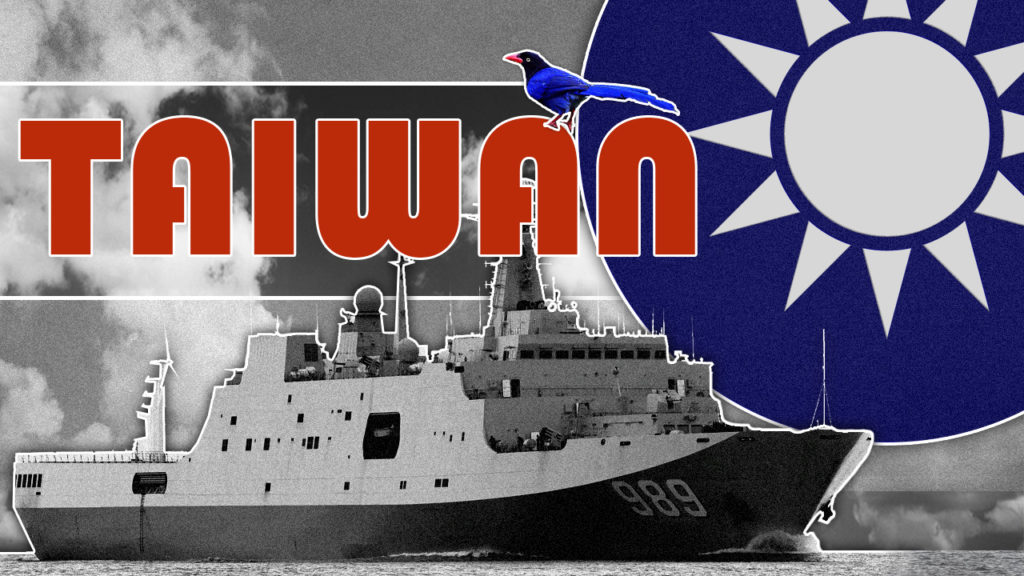

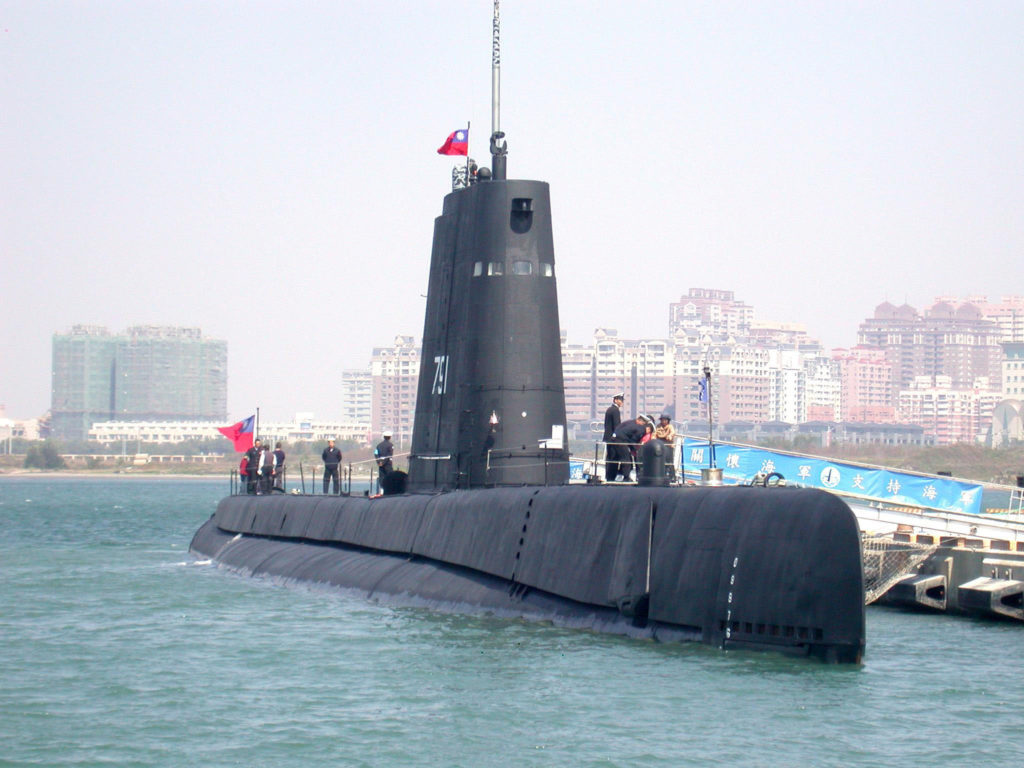


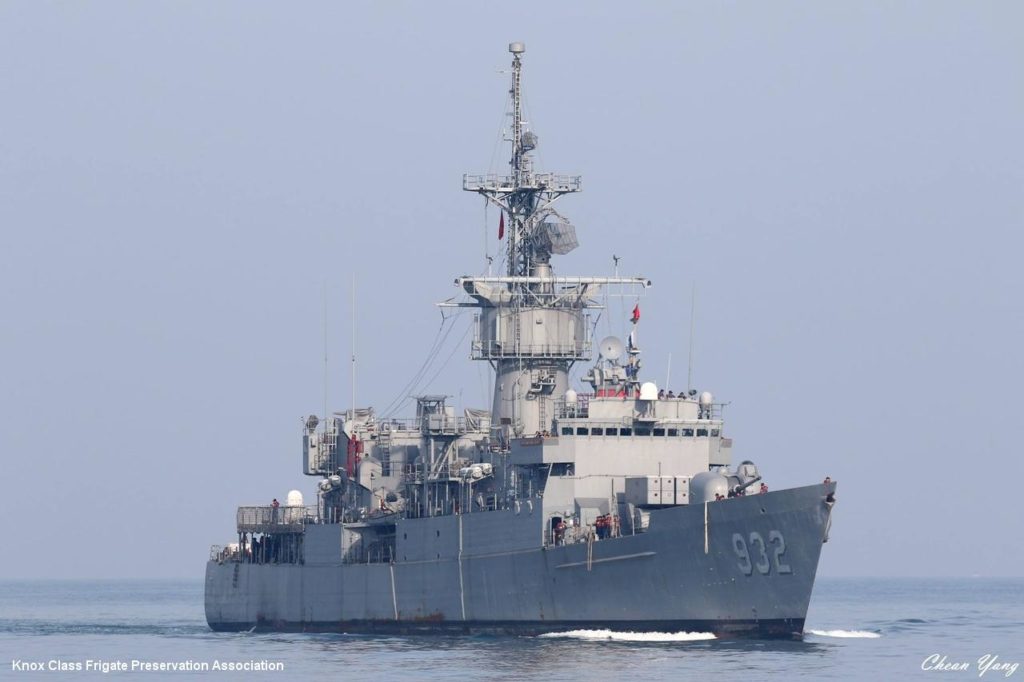
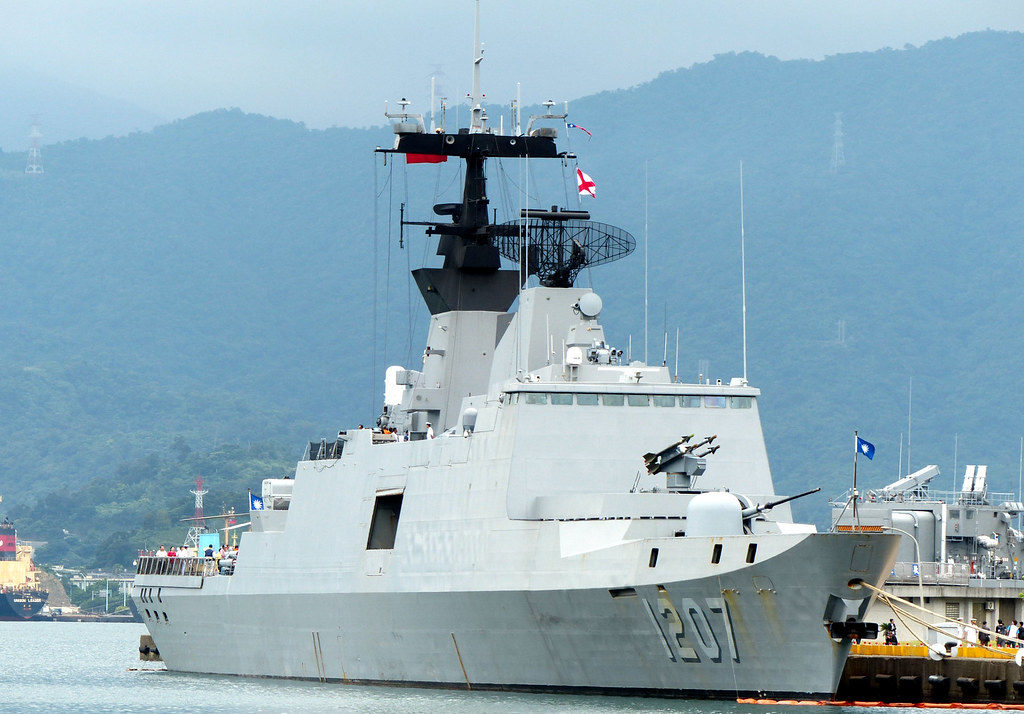
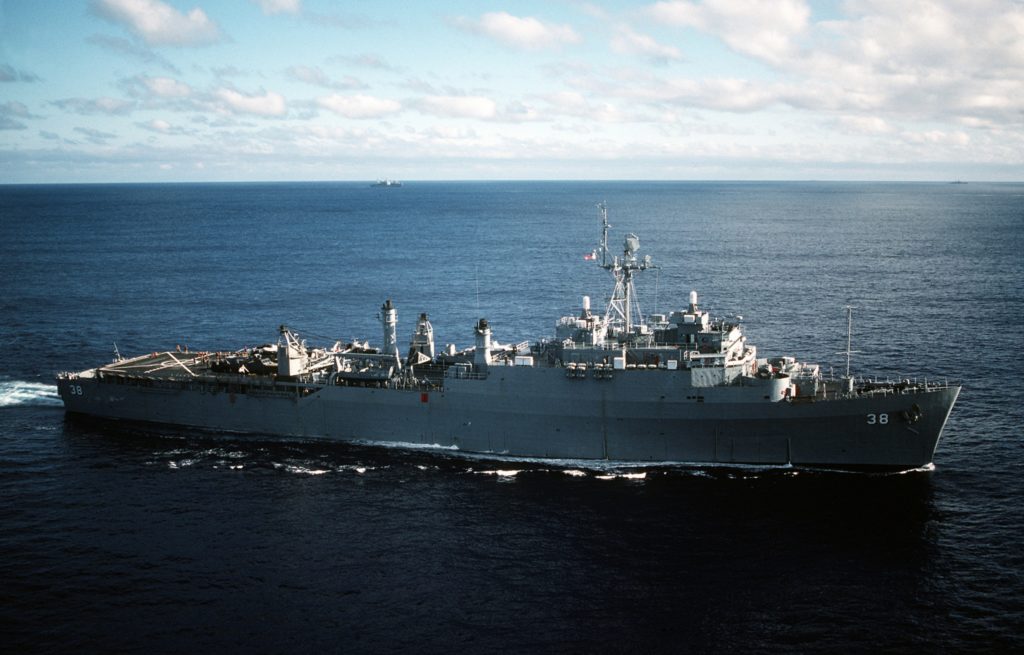
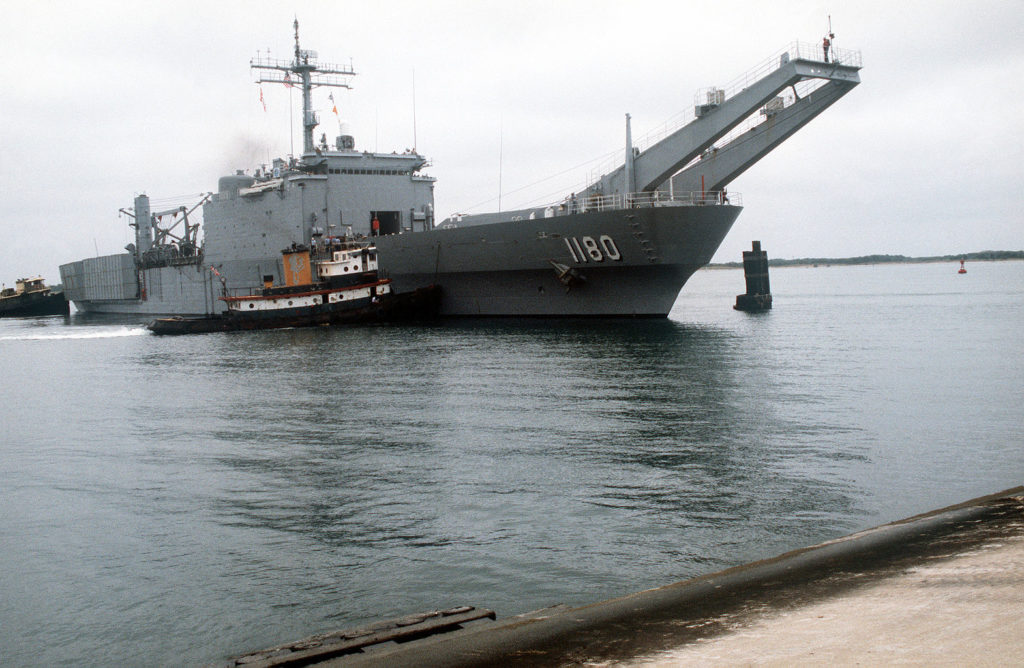
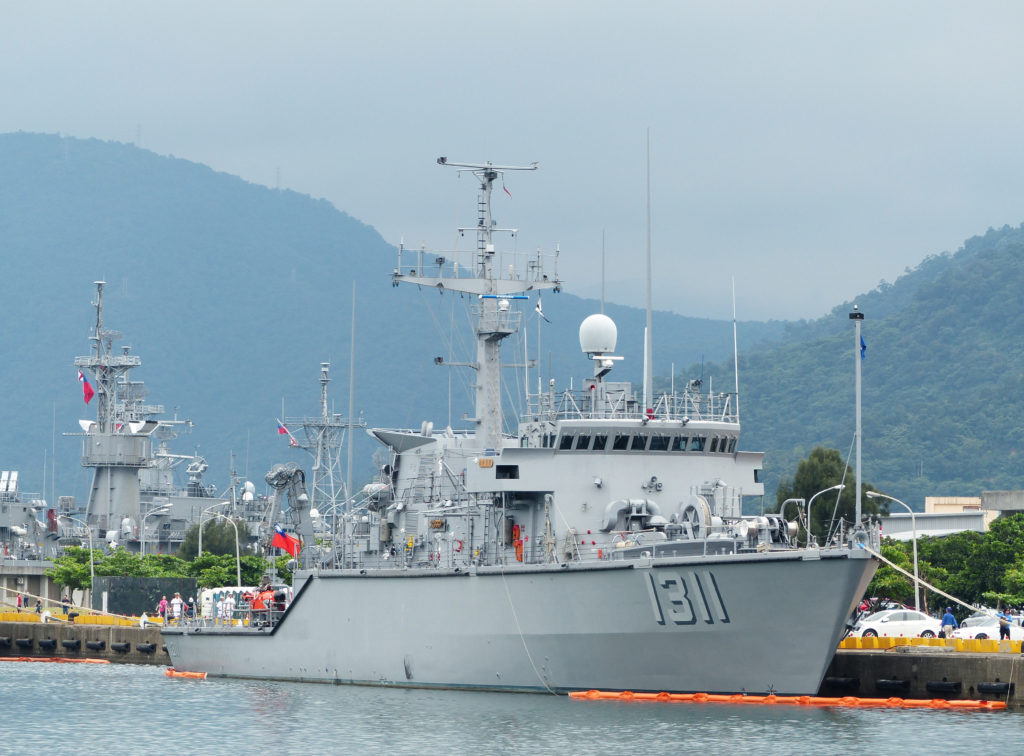
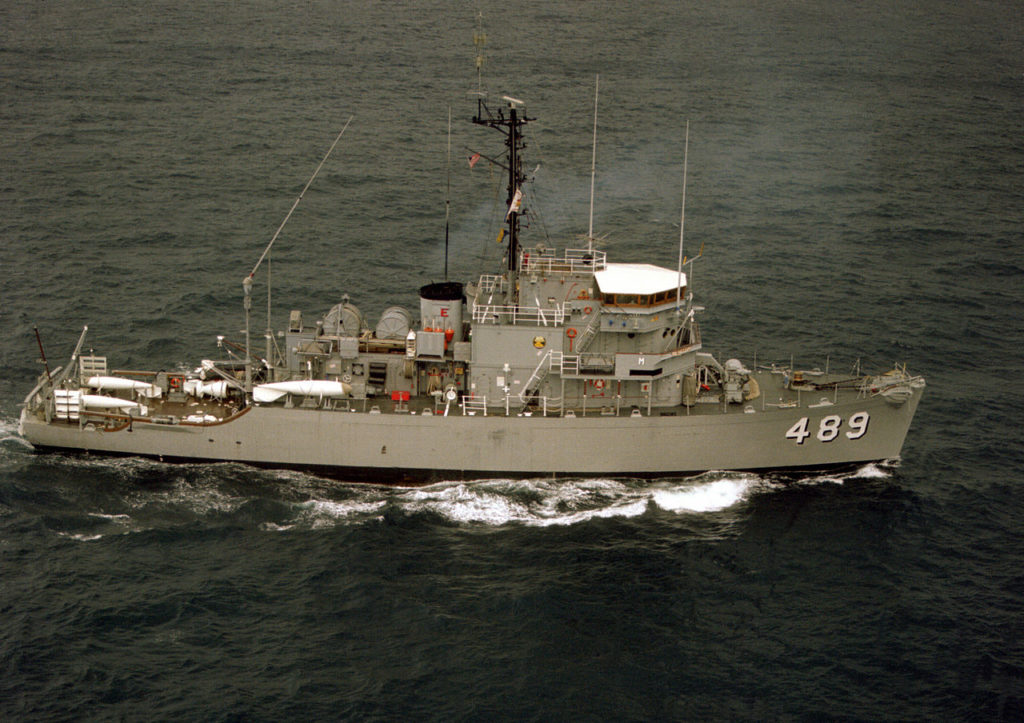
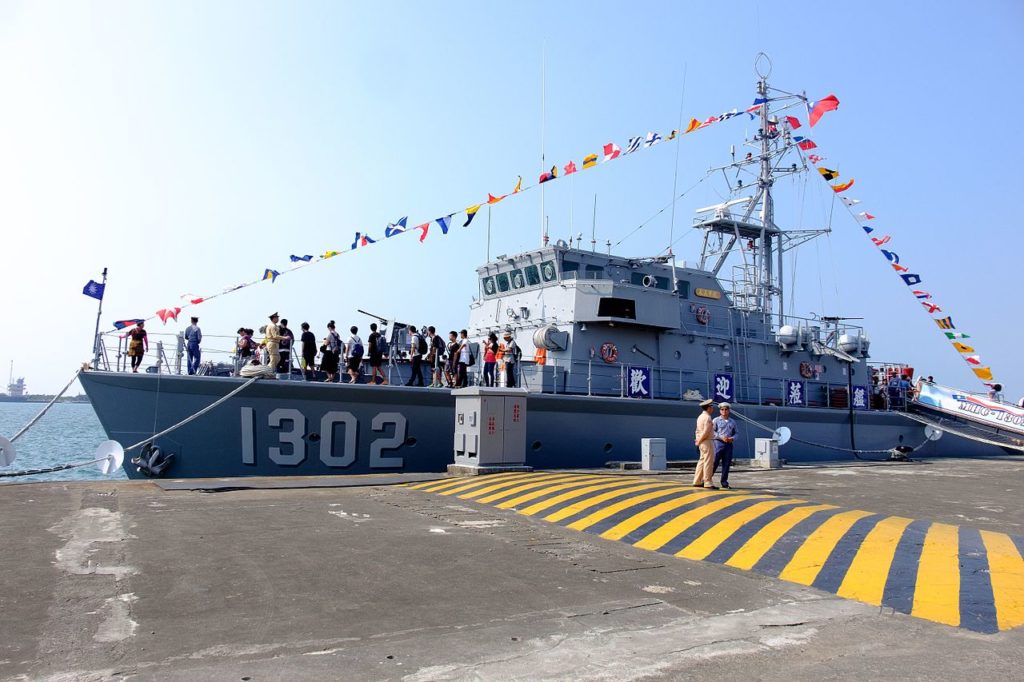

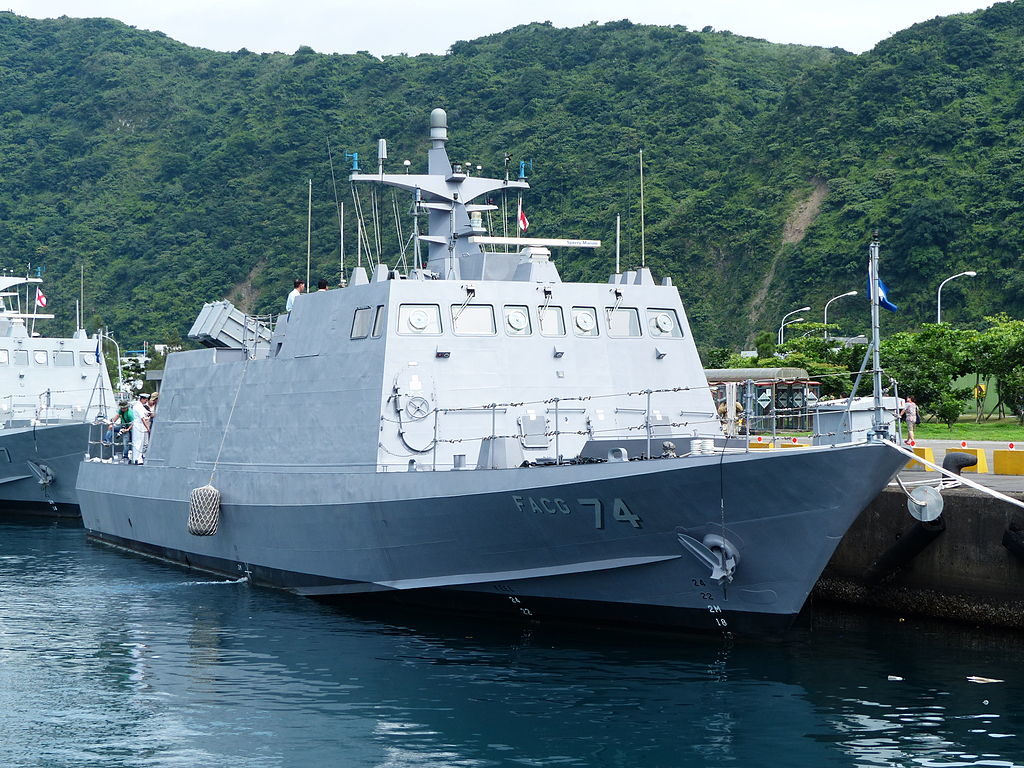

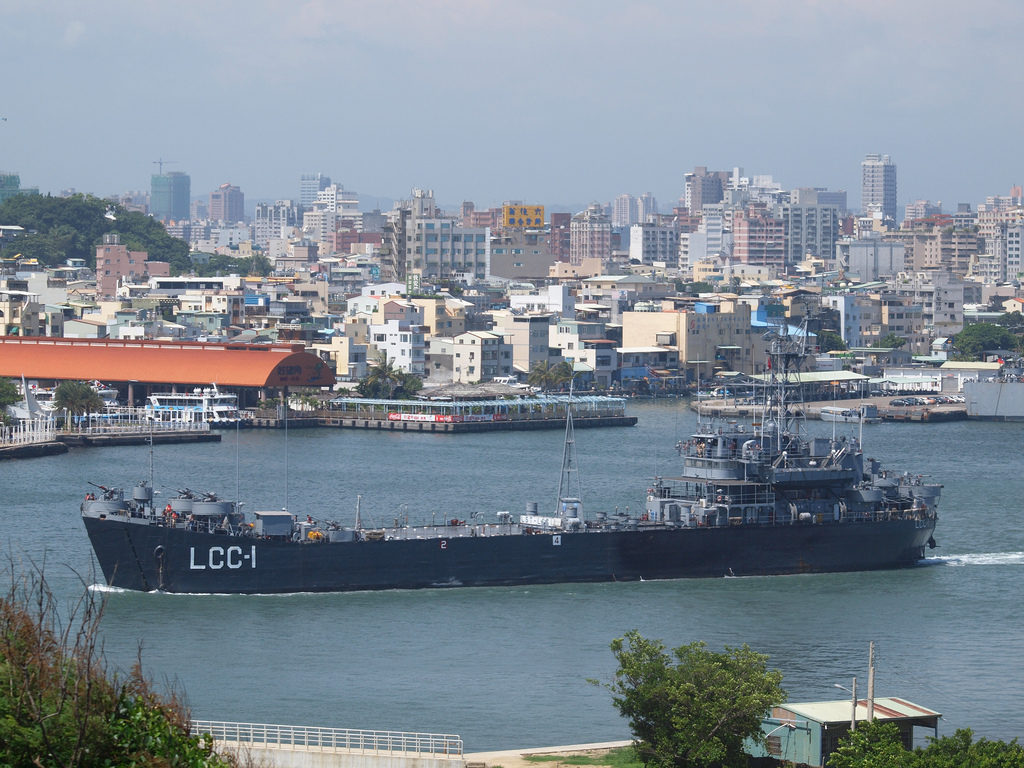
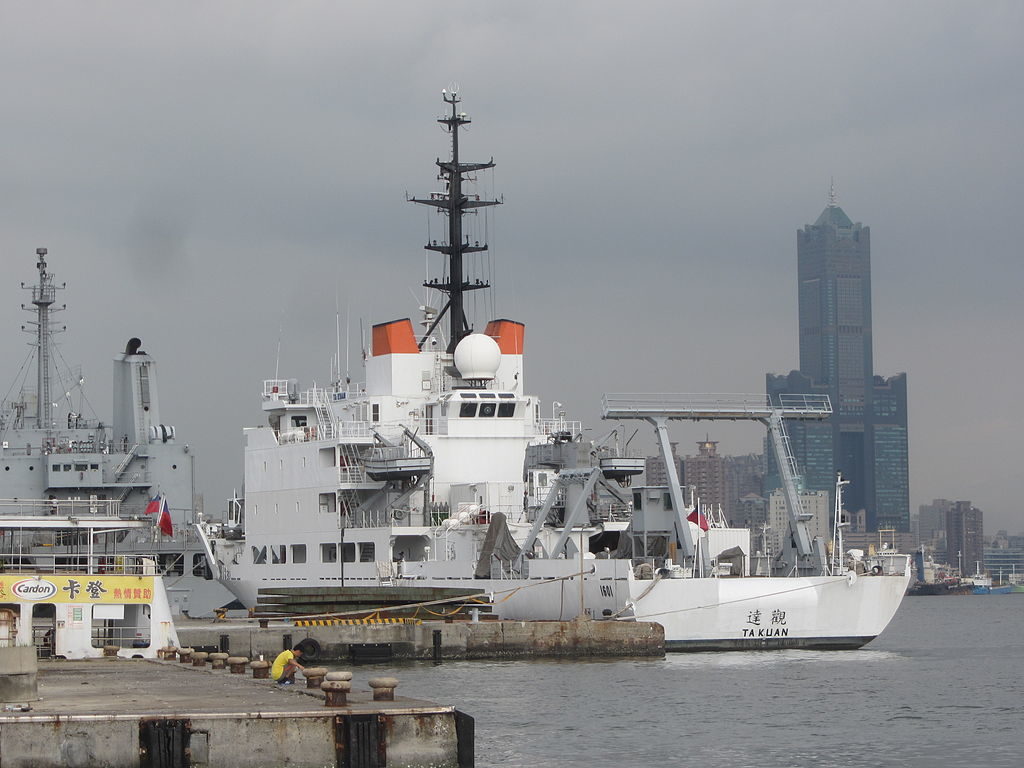
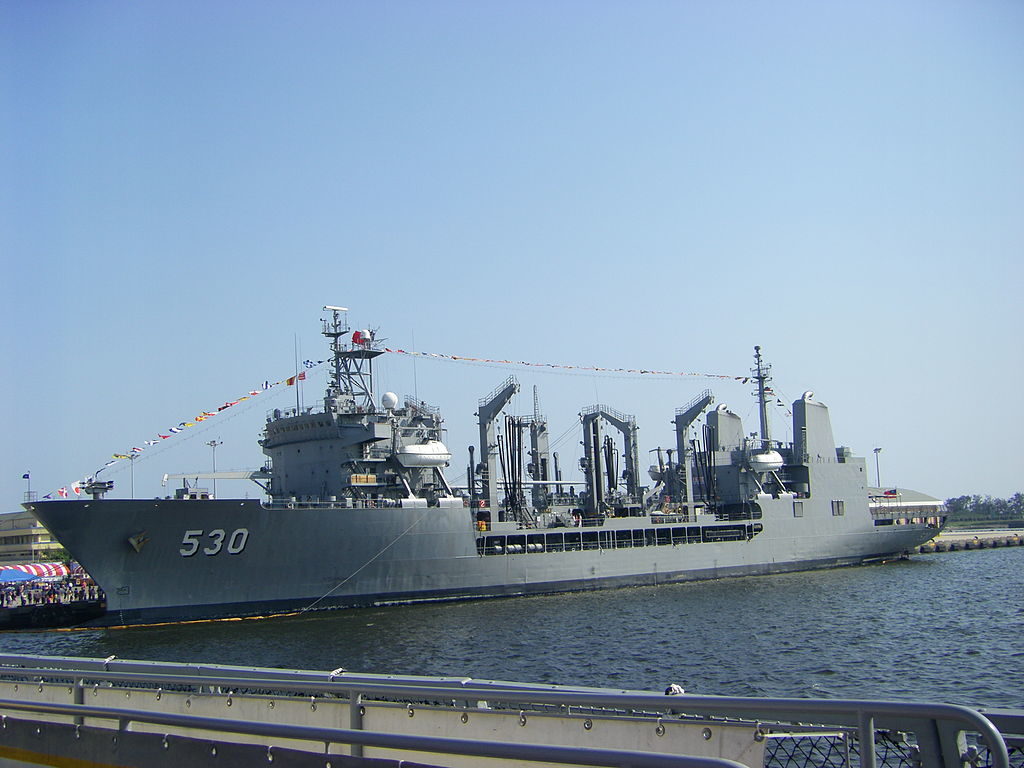
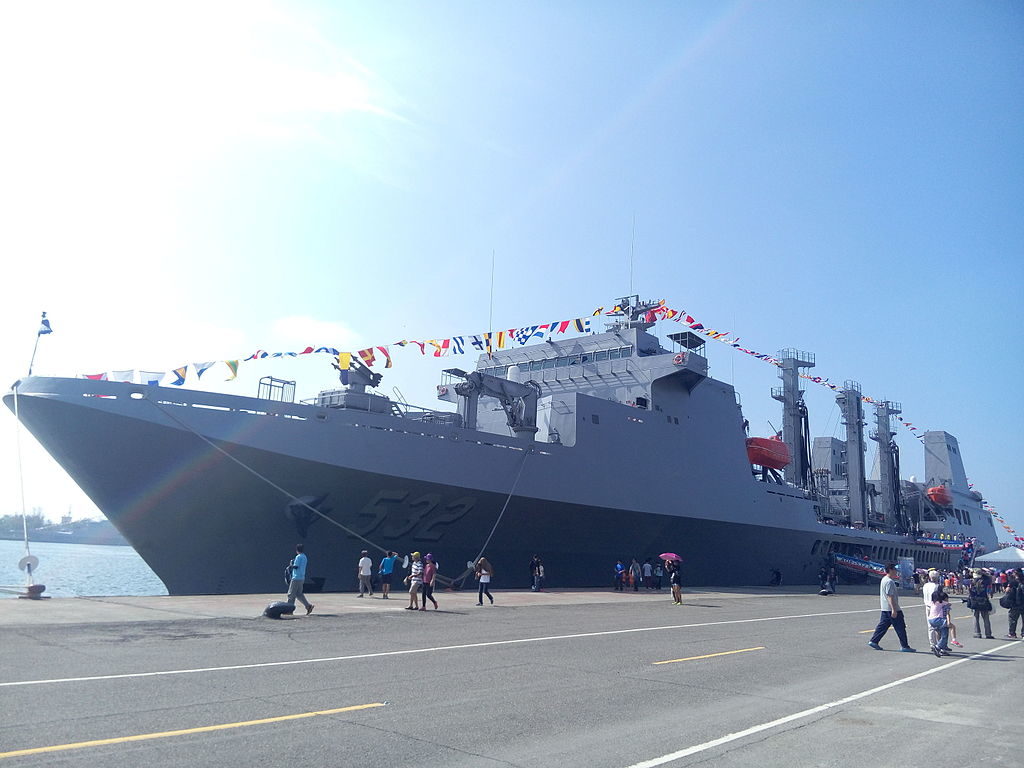



Good analysis. And while I feel for Taiwan’s desire to remain independent of China, I still think it’s a lost cause. China is never going to accept the current situation – no force of diplomacy or military arms is going to change that. And the U.S. just isn’t that much of a overwhelming treat to China as it was (relative) to 20 years ago. I suppose at this point in history, it’s more a matter of which economic Ponzi – the U.S. or China – collapses first and how each of them react.
Considering capital mobility, Chinese game is a win-win, they used their money to build roads, rails, airports and tech, all these can be put into many uses. the US used its to build bombs and debts,
…the US used its to build bombs and debts and Israel. Why do people always forget that last part? It must be the anti-Semitism!
I wouldn’t underestimate Taiwan’s ability to defend itself. Sure China could probably take the outlying islands with little difficulty, but taking the main island would be extremely costly for them.
Taiwan is a rotting pimple on Americunt and Jew lardass, it is high time the PRC just invade and finish off this farce and reunite it with mainland China. Taiwan can not last 10 minutes.
Actually Taiwan is a very nice country, and while historically and geopolitically China considers it part of the “One China”, it was pretty much left alone by China until Obama, Hillary and Trump / Bolton came along.
Things were pretty much OK between China and Taiwan with gradual normalisation of relationship before the US “Tilt to Asia”.
Taiwan will be the first country “tilted” as a casualty in a US provoked conflict with China in the Pacific.